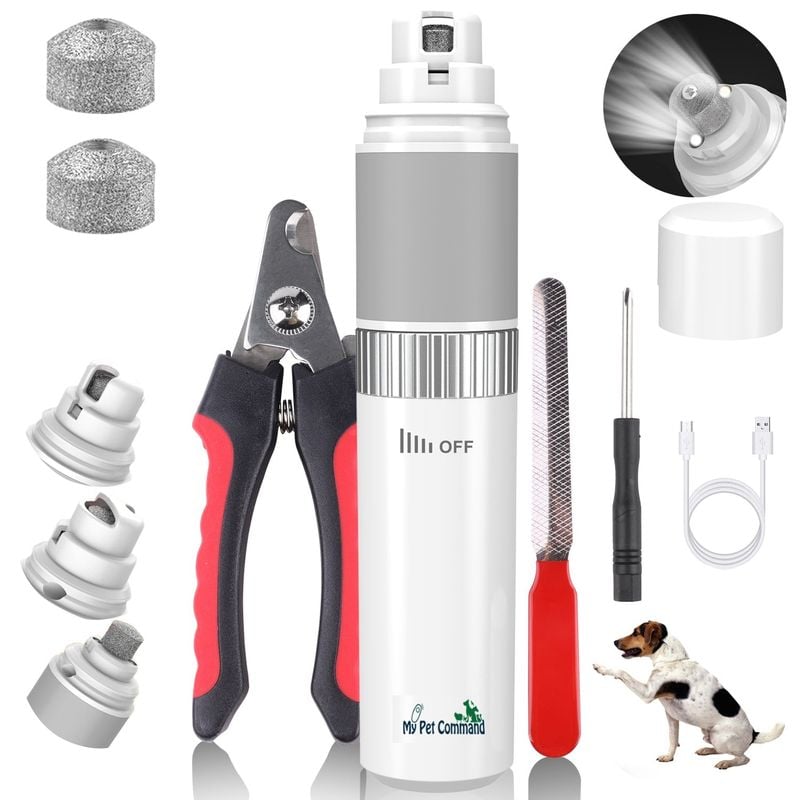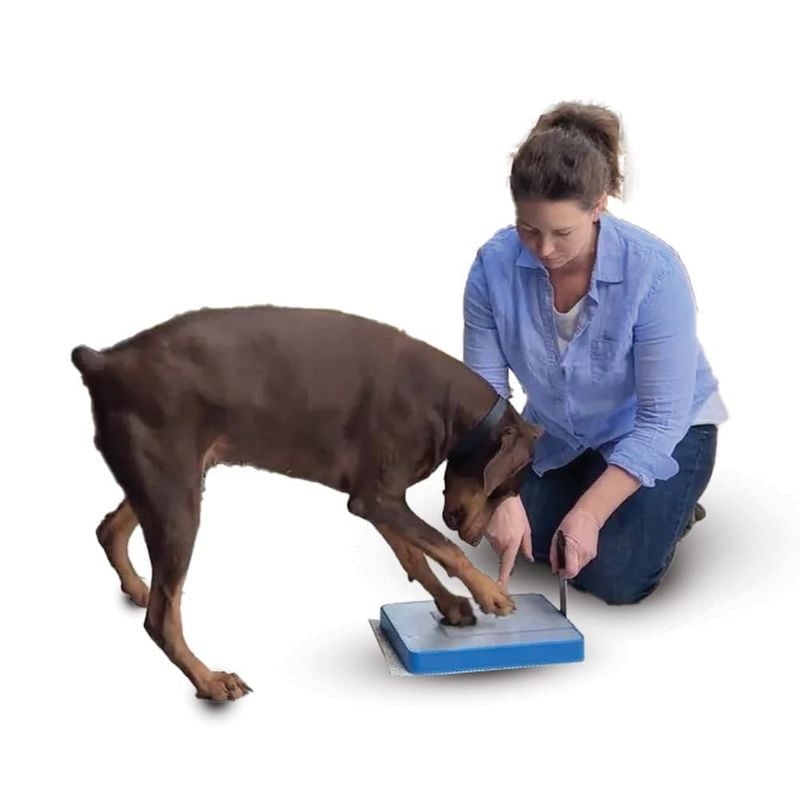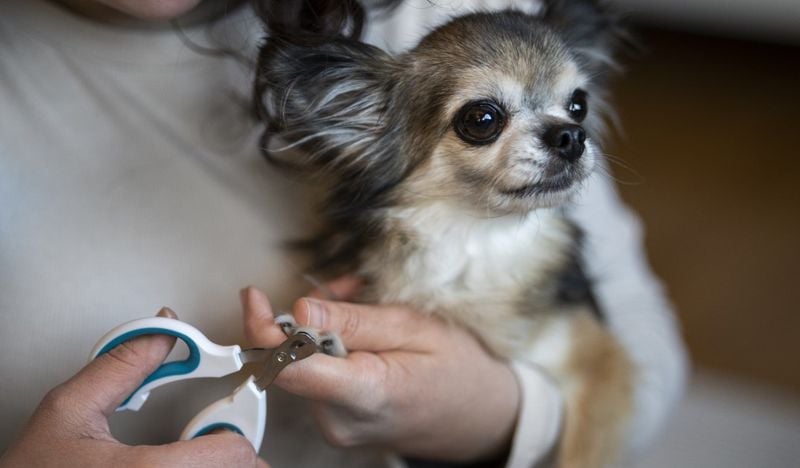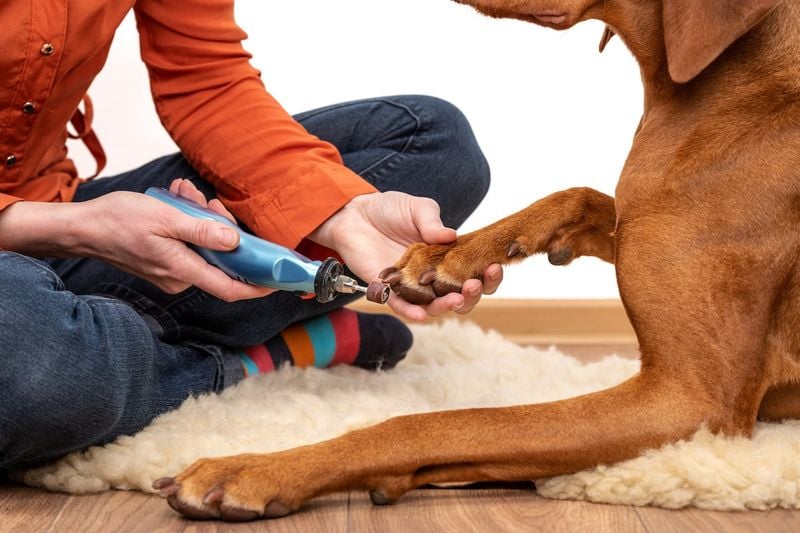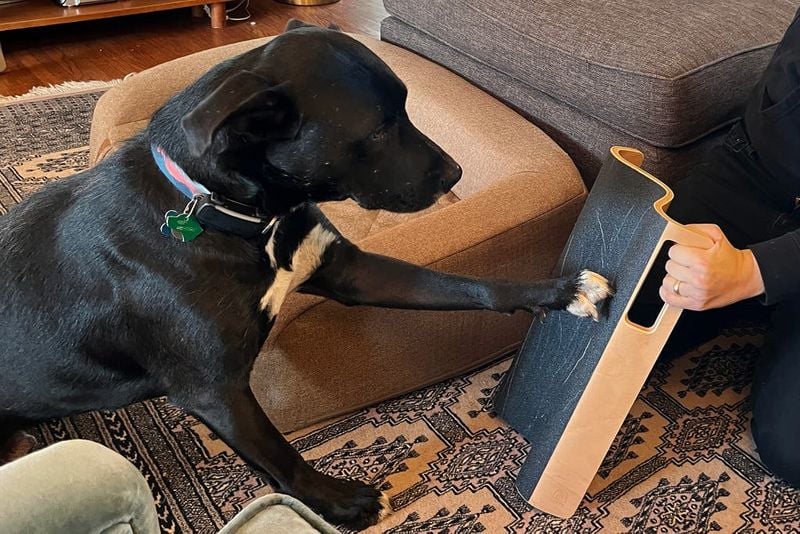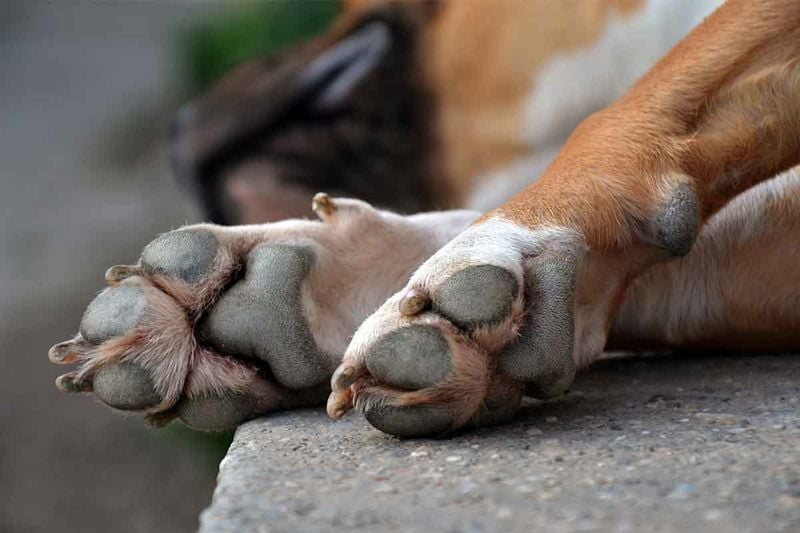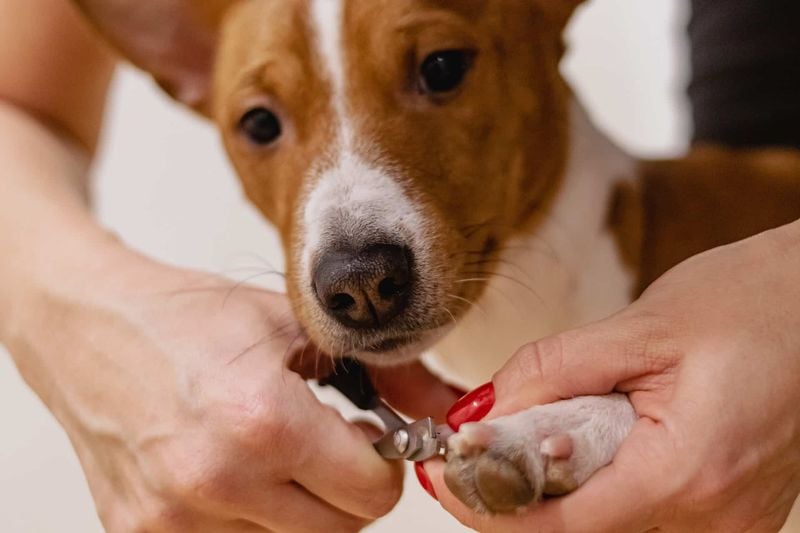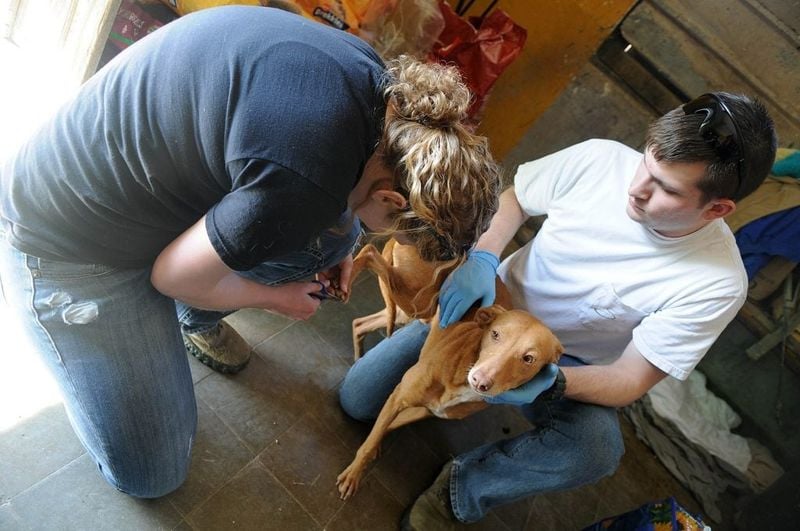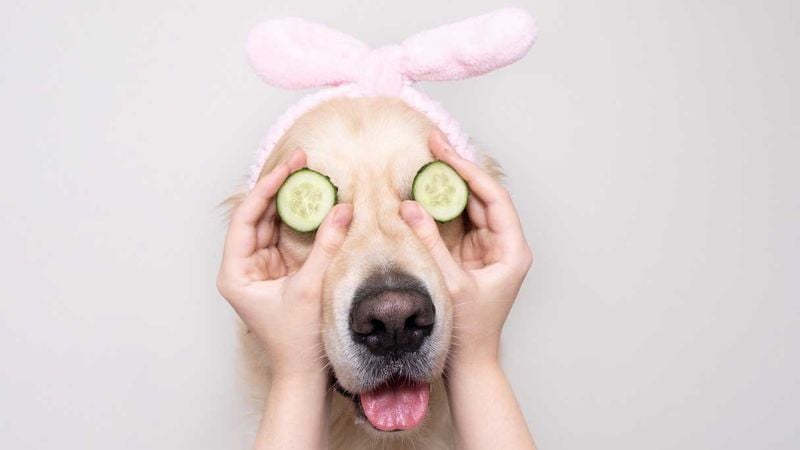13 Genius Tricks to Make Trimming Your Dog’s Nails Way Less Stressful
Trimming your dog’s nails probably isn’t your favorite bonding activity—and chances are, your pup isn’t thrilled about it either. The moment you pull out the clippers, they suddenly remember a very important meeting… under the bed.
But keeping those nails in check is more than just a cosmetic chore—it’s a big part of your dog’s overall health. When nails get too long, they can crack, split, or even grow into the paw pads.
That means pain, infections, and unnecessary vet bills—none of which you or your dog need. Plus, long nails can mess with your pup’s posture and joint health over time.
So yes, regular nail trims matter. But we totally get it—it’s easier said than done. A lot of dogs act like you’re coming at them with a chainsaw instead of a simple set of clippers.
The good news? It doesn’t have to be this stressful—for either of you. With the right tools, a little patience, and a few smart tricks, nail trimming can go from dreaded task to no-big-deal routine.
You might even find your dog wagging their tail through it. (Okay, maybe not every time, but close!)
This article breaks down 13 tips that can make a world of difference. Whether you’ve got a nervous pup, a wiggly goofball, or a seasoned nail-trim avoider, there’s a strategy here that’ll help.
And hey, you might even come away feeling like a bit of a pro.
1. Start Slow and Early
Dogs aren’t born loving nail trims—it’s something they need to get used to over time.
That’s why early exposure can make a world of difference. If you’ve got a puppy, handle their paws gently each day, rewarding them with treats and praise so they associate it with something good.
Even adult dogs can learn to tolerate, or even accept, nail care with the right approach.
Begin with short, non-invasive sessions.
Touch their paws without trimming and gradually introduce the tools.
The key is consistency and patience.
When your dog realizes the clippers don’t mean pain or panic, they’ll be less likely to resist.
Build trust before you ever make that first cut.
2. Use the Right Tools
Cheap clippers or dull blades can turn nail trimming into a painful, frustrating mess.
That’s the fastest way to make your dog hate the process—and possibly you, for a few minutes. Using the right tool can drastically reduce discomfort and make trimming more efficient.
Choose clippers designed for your dog’s size and nail type.
Guillotine clippers, scissor-style clippers, or electric grinders each have their place.
Grinders are excellent for smoothing rough edges and easing anxiety in noise-tolerant dogs.
Make sure whatever you use is sharp, clean, and quiet.
You’ll both have a much better experience with tools that actually work for the job.
3. Tire Them Out First
A hyper, energetic dog is not an ideal nail-trimming candidate. They’re more likely to squirm, pull away, or bolt the moment you get close with clippers. Giving them a workout beforehand is a surprisingly effective strategy.
Take them for a walk, play fetch, or schedule your trim after a day at doggy daycare.
When their body is tired, their mind tends to be more relaxed, too.
Less energy equals less resistance.
It won’t magically make them love nail trims, but it absolutely gives you the upper hand.
Think of it as setting the mood—dog style.
4. Use Positive Reinforcement
Bribery? Absolutely.
When you’re asking your dog to do something they find scary or annoying, a little positive reinforcement can go a long way. Treats, praise, and cuddles are powerful motivators.
The trick is rewarding during the process, not just after.
Clip one nail, offer a treat.
Hold a paw, praise like they just won the Nobel Prize.
Over time, they’ll start connecting nail trimming with snacks and affection instead of fear.
Stay upbeat and calm to reinforce good vibes.
Eventually, they’ll stop seeing the clippers as villains and more like a ticket to snack time.
5. Try a Pawdicure Mat or Elevated Surface
Your kitchen floor might be the worst place to trim nails.
Slippery surfaces make dogs feel insecure, and the constant shifting can throw off your rhythm.
A pawdicure mat or grooming table can completely change the experience.
Non-slip mats offer better footing, helping your dog stay still.
Elevated surfaces (like a washer/dryer or designated pet table) give you better control and reduce squirming.
Just be sure they’re secure and supported.
Never leave them unattended on an elevated spot.
Stability for them means more confidence for you—win-win.
6. Know the Quick—and Avoid It
There’s nothing that sours a nail trim faster than cutting the quick. That small blood vessel inside the nail hurts when clipped and can bleed quite a bit. Dogs remember that pain—and so do you.
For dogs with light nails, spotting the quick is easy.
It’s the pink area inside the nail.
For dark nails, trim tiny bits at a time.
Look for a gray or chalky ring in the center—that’s your warning sign.
If you do nick the quick, stay calm and use styptic powder to stop the bleeding.
It’s all part of the learning curve.
7. Do It in a Bright, Quiet Room
Chaos and distractions are not your friends during nail trimming.
A loud environment can put your dog on edge and make it harder to focus on what you’re doing.
Instead, choose a quiet, well-lit space where both of you can stay calm and focused.
Natural light or a bright lamp will help you see the nail structure clearly.
It also helps prevent over-trimming or hitting the quick.
Avoid trimming in rooms with lots of foot traffic or sudden noises.
Peace and visibility are your secret weapons here.
A zen trimming zone makes a massive difference.
8. Use a Grinder if Clippers Make Them Anxious
Not all dogs are fans of the snip.
The sudden sound and pressure of clippers can make some pups jumpy.
In these cases, a pet nail grinder might be the better option.
Grinders are quieter, more gradual, and less likely to crush the nail.
They’re also great for smoothing out sharp edges post-trim.
Introduce the grinder slowly—let them hear and smell it first.
Touch it gently to their paw without turning it on.
Gradual desensitization turns this buzzing tool into a nail care hero.
9. Desensitize with Touch Training
If your dog flinches every time you reach for a paw, nail trimming’s going to be rough.
Touch training helps by building comfort and familiarity with paw handling.
It’s like socialization, but for their feet.
Start by gently petting and holding their paws during cuddle time.
Reward them for staying calm.
Gradually work your way up to pressing on the nails and spreading the toes.
Once they’re used to it, adding clippers or grinders into the mix feels less foreign.
This isn’t an overnight fix—but the more you practice, the more relaxed they’ll be.
10. Keep Sessions Short and Sweet
Trying to tackle all four paws in one go can overwhelm both you and your dog.
There’s no rule saying it all has to happen at once.
In fact, shorter, more frequent sessions are often better.
Clip just a few nails a day.
Celebrate each successful snip with a treat and call it a win.
This approach builds tolerance over time and avoids the dreaded meltdown.
Think of it as a mini spa session instead of an all-out battle.
Little wins lead to long-term calm.
11. Have a Helper
Solo trimming can be a circus act—especially if your dog is a squirmer.
Having an extra set of hands can completely shift the experience.
One person can soothe, distract, or hold while the other focuses on the trimming.
Choose someone your dog knows and trusts.
They don’t need grooming experience—just patience and gentleness.
Even holding a treat near your dog’s nose can keep them still.
Tag-teaming turns a high-stress task into a coordinated effort.
You’ll get better results with way less frustration.
12. Maintain a Routine
Nail trims shouldn’t be a surprise attack.
When done regularly, they become a normal part of life—and that’s exactly the goal.
Long gaps between trims let nails overgrow, making the quick harder to avoid.
Aim for every 2–4 weeks depending on your dog’s activity level.
Active dogs may naturally file nails down, but most still need trimming.
Routine builds familiarity.
Your dog learns what to expect, and you get more confident with the tools.
It’s a habit that pays off in smooth, stress-free paws.
13. Make It a Spa Day
Why not turn nail trimming into something your dog actually enjoys?
End each session with pampering—extra cuddles, a favorite toy, or even a gentle massage.
The goal is to shift the emotional association.
If every trim ends with love and attention, they’ll begin to relax more over time.
You’re not just trimming nails—you’re strengthening trust.
Put on calming music, speak softly, and treat it like a bonding ritual.
The more positive you make it, the less dramatic it becomes.
Happy paws, happy dog, happy you.


